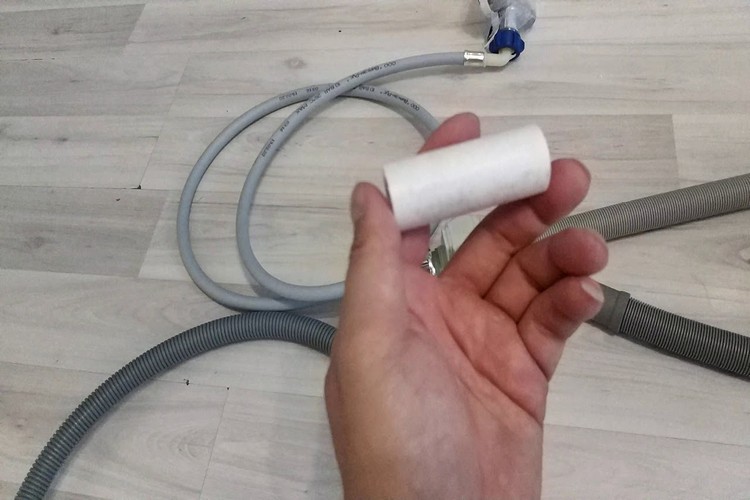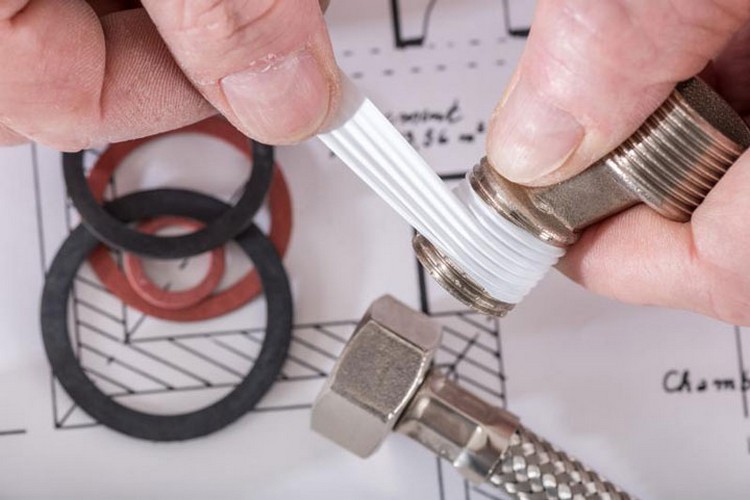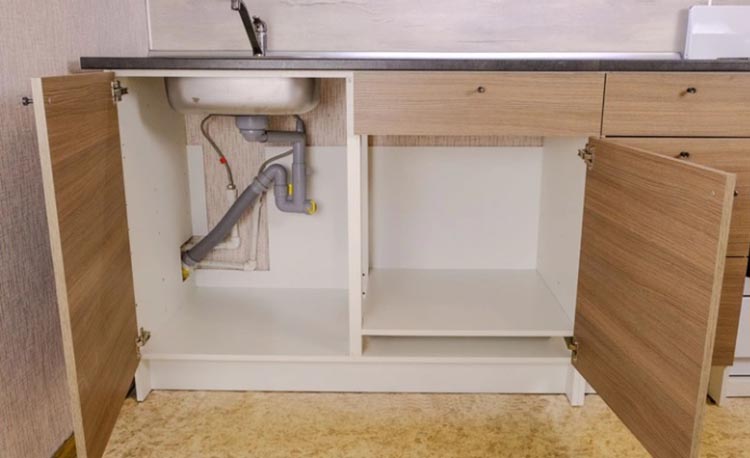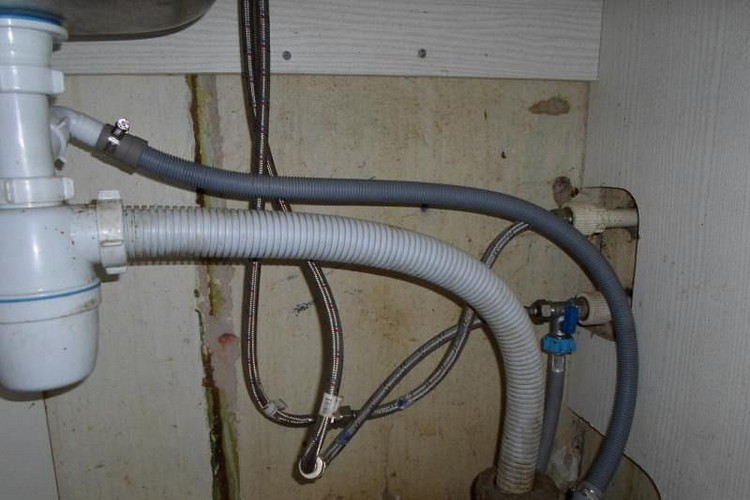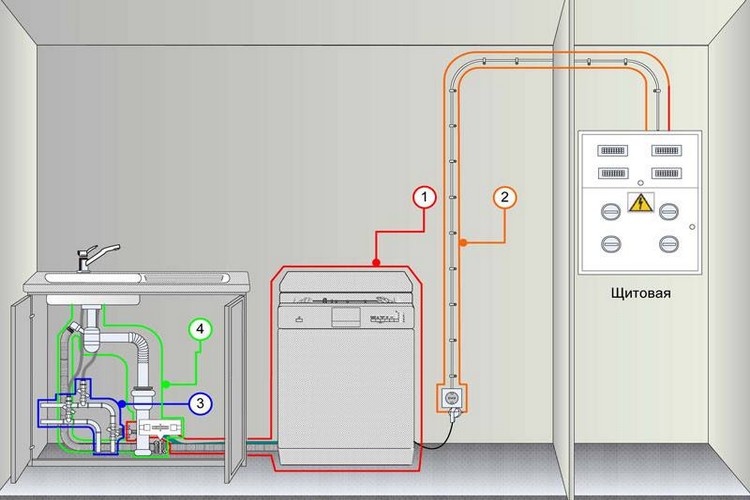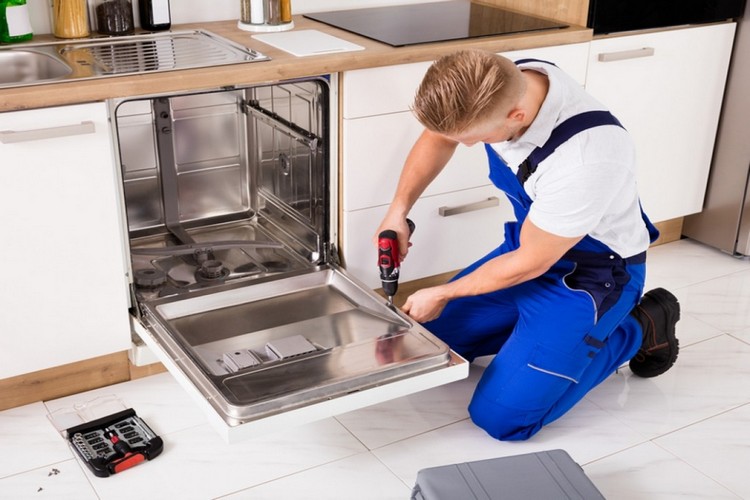Detailed guide: installation and connection of the dishwasher to the water supply, sewerage, electrical network
 Installing a dishwasher is easy.
Installing a dishwasher is easy.
But even in this simple algorithm there are a lot of nuances that need to be taken into account.
Where is it better to put the dishwasher, how to calculate the distance, what tools are needed and how to do it?
How to install, connect and configure a dishwasher with your own hands?
Currently, there are a large number of dishwashers on the market, which differ in both quality and price.
But even the highest quality equipment can fail if it is installed incorrectly..
Therefore, it will not be superfluous to know what steps to take before installing the dishwasher. So, how do you properly install a dishwasher?
To begin with, it is necessary to determine the place of its installation, provide access to connected communications and make the first configuration before starting.
Content
- How to choose the right place for your dishwasher
- Connection to PMM communications
- Important to remember during installation
- How to properly install PMM
- How to connect a dishwasher to the water supply
- How to connect to electricity
- How to connect to a drain
- How to install the front on the built-in dishwasher door
- Preparing for work after installation
- Useful video
How to choose the right place for your dishwasher
To install a dishwasher, you need to know where this equipment will stand.
In the kitchen, you need to take into account various factors, including the location of communications.
We list the main points that must be taken into account:
- Proximity of communications: next to the place there should be a 220 V socket, a water supply, as well as a drain. The PMM drain hose should not be longer than 1.5 m, otherwise the load on the pumps will be increased, which may cause its failure.
- It is not recommended to place PMM near heat sources. This will negatively affect the operation and durability of the machine itself. For example, it’s definitely a bad idea to be next to an old-style electric stove - it gets very hot. But with most modern stoves, such problems will not arise - they have minimal heating of the outer surface of the case, so you need to look at the situation.
- Neighborhood with a washing machine is possible only in separate niches. You can’t put them close: the vibration from the washing machine can break fragile dishes (for example, crystal, glass objects) and generally harm the PMM.
- You should not plan placement from the very edge of the kitchen set. Full-height PMM models (for example, Bosch 60 cm) are built just under the countertop, so then their side surface will have to be covered with something additional, and this will entail extra costs.
- Accordingly, the ideal place for a built-in or freestanding (including desktop) dishwasher is to the left or right of the kitchen sink, where all communications will be available at once.
Connection to PMM communications
A dishwasher from the brands Bosch (Bosch), Electrolux (Electrolux), Beko (Beko), Hotpoint Ariston (Hotpoint Ariston), Midea (Medea), Siemens (Siemens), Hansa (Hansa) is a great helper in the house. But buying this equipment is only half the battle.
Next, you will need to connect the dishwasher to the water supply and sewerage, as well as to the mains. The cost of such work, especially in Moscow, is quite high. Therefore, if you have the skills, it makes sense to do them yourself.
Before installing the dishwasher in place, it is better to once again check the availability of communications and the correct length of hoses and power cord.
Connecting a dishwasher is a business that requires skills in plumbing work. And the more experience you have in this kind of work, the better. You must understand that the durability and trouble-free operation of your dishwasher depends on the quality of installation.
Before starting work, be sure to check that you have all the necessary tools and fixtures.
In order to properly connect the dishwasher, in addition to a screwdriver and pliers, you may need a drill, a level, and also:
- Epoxy adhesive
- clamps;
- siphon with an additional branch;
- tee tap brass or bronze, but not silumin;
- wrench;
- wire cutters;
- earthed socket.
- Adjustable wrench - needed to install a tee on a water supply for connection. PMM if it's not already
- Phillips screwdriver - for hanging the facade, if necessary.
As for consumables, fum-tape and plumbing tape for fixing the drain hose may be useful.
The main thing is to check if you have a flexible water supply hose to the PMM and how much is available. It must be of sufficient length for the selected installation site, it is better to check this carefully in advance.
Also, if you have nowhere to connect the water intake hose, you will need to buy a tee and install it on the water supply to the kitchen faucet, or dilute it from the manifold in the riser.
The withdrawal from the riser is carried out as follows:
- Connect the adapter for polypropylene pipes to the free outlet of the collector;
- Lay a route to the installation site of the dishwasher, if necessary; using connecting fittings and elbows;
- At the end, mount the water socket and screw a metal square with an external thread into it into it? inches;
- It remains to connect the supply hose from the machine kit.
If it is impossible to bring a separate pipe to the installation site of the dishwasher, then there is an option to connect a kitchen sink mixer into the gap.
To do this, you need a tee with a faucet:
- It is necessary to first turn off the water supply in the riser and release the remaining excess pressure by opening the tap in the sink.
- Now you can install the tee under the sink.
Do not forget to seal all threaded connections with FUM tape.
Important to remember during installation
Important - during the installation of the PMM, you need to study the instructions that are attached to a specific model. It indicates the layout and connection of all necessary elements. The installation of the dishwasher must be carried out in accordance with the norms of SNiP.
Each manufacturer gives its own installation recommendations, and if they are grossly violated, you may be denied service under warranty in the future.
As a rule, the instructions also indicate all the necessary dimensions for embedding, and there may also be special recommendations for some models.
A few useful little things to consider when connecting a dishwasher:
- If you have a ground loop installed, then do not forget to connect it.
- Be sure to check for leaks in the system. If water flows from the machine, then it needs to be turned off and sorted out.
- The drain hose must not hang down a slope. This may cause water to drip onto the floor.
- There should be no protrusions on the bottom of the dishwasher. It must be carefully attached with bolts and nuts.
- The drain pipe must be attached to the sewer pipe.
- To avoid leaks, you need to install a drain filter.
- You need to make sure that the dishwasher is connected to water and electricity, as well as that there is free access to the outlet.
- If your dishwasher does not have an outlet, then you need to buy an extension cord that can withstand the load.
- Don't forget to connect a drain if your dishwasher has one.
The dishwasher is a fairly new invention, but it has already become an integral part of our lives. It makes it easier, more convenient and faster. Therefore, it is worth a little work to get a good result.
How to properly install PMM
To install the dishwasher, you need to carefully consider the place in which it will be installed, and properly fix it to the floor and hangers.
It is necessary to do this in such a way that water does not get on electrical equipment, electrical wiring, furniture, etc. during its operation. If you choose the right place for the dishwasher, you can avoid many problems, as well as significantly save electricity and water.
You can not embed it in any part of the kitchen. In order to properly install the pmm, you must observe the necessary gaps and distances. The distance between the sink and the equipment following it must be at least 5 cm.
Before buying built-in appliances, measure the dimensions of the kitchen cabinet. Dishwasher legs can be adjusted in height. Use a level to level the machine. Some models are very sensitive to tilt even as low as 2 degrees. This may affect their future work.
Mount the machine near a sink. This will make it easier to connect the drain and water without having to extend the hoses. Experts say that lengthening the hoses can lead to leakage, as well as create a large load on the drain pump.
When building into furniture, install a metal plate under the countertop to protect the wood from steam. In many built-in models, the plate is included.
To find the most convenient and technically safe location, before placing the dishwasher, read the following tips:
- PMM should not be closer than 40 cm from the stove, oven and hobs.
- The microwave oven must be placed at least 50 cm away from the oven.
- Washing machine and dishwasher must not be in contact with each other walls.
These rules are related to the peculiarities of the work of different types of equipment. For example, a washing machine during the spin cycle produces too much vibration. This can damage the dishwasher. If two appliances are turned on at the same time, there is a high probability of simply breaking all the dishes inside.
PMM should not get very hot. For this reason, it is worth keeping a distance from stoves, ovens and any heating appliances. Under the influence of high temperature, the seals inside the equipment quickly dry out and become unusable.
There may be other breakdowns that will not be fixed under the warranty card due to violation of operating conditions. Microwave waves from a microwave oven can also negatively affect the operation of the PMM.
To connect the equipment to the network, a separate moisture-resistant socket is used. Do not connect with extension cords or tees.
When placing equipment, we recommend that you take into account the standard length of the cord. It is 1.5 m. Therefore, install the PMM no further than 50 cm from the socket with moisture protection.
How to connect a dishwasher to the water supply
This part is the most laborious in execution, it takes much more time than connecting other communications. Turn off the water before connecting the dishwasher.
Then you need to follow the following algorithm:
- Find the place where the sink faucet flexible hose connects to the plastic pipe.
- Open these two parts.
- Take a pre-purchased plumbing tee. Wrap FUM tape on the thread.
- Connect the tee to the metal-plastic pipe.
- In the upper part, fix the flexible hose of the mixer, after wrapping the FUM thread with tape.
- Connect a fine filter to the remaining outlet. Attach a stopcock to it.
- Connect the resulting structure to the dishwasher with a flexible hose.
- Turn on the water supply.
PMM require connection only of cold water supply systems.
Firstly: the technique itself has many different programs with its own temperature regime, under which it heats water.
How to connect to electricity
PMM are high-power embedded technology. This means that before installing the dishwasher yourself, make sure that the wiring in the apartment can withstand the upcoming loads.
Much attention in this matter is paid to the cross section of copper conductors. It must be at least 2 mm. To understand the exact value, use special cross-section formulas or consult an experienced electrician.
The dishwasher is connected to a nearby outlet with a voltage of at least 16 A. Remember to install a grounding contact. It is provided by electricians in sockets.
How to connect to a drain
It is necessary to install a new siphon with a separate pipe under the kitchen sink. A drain line is connected to it.
This takes into account two important requirements:
- The drain circuit must cut into the siphon at an angle. In this case, most of the water will go by gravity.
- At the connection point of the circuit, you must additionally create a small inflection to prevent water from being drawn from the sink.
With a far location of the PMM from the water source, you will have to install another tee. A hose will run from it to the siphon under the sink.
How to install the front on the built-in dishwasher door
There are two ways to fix the facade:
- Partial fastening. In this case, the panel closes the main part of the door, while the control panel remains visible.
- Full installation. The dishwasher door is fully closed with a panel.
The finished front panel is mounted only on self-tapping screws. The use of glue, even very resistant, is undesirable. He, most likely, due to constant temperature fluctuations, will become unusable and lose his properties.
When using self-tapping screws, make sure that they firmly enter the material, but do not crawl out of it either from the front or from the back. Otherwise, there is a high risk of injury and damage to equipment.
The facade is fixed, starting with the handle. To carry out these works, dishwasher manufacturers make special holes on the door, and also offer templates for fixing parts.
Upon completion of installation, check how evenly the facade is installed, if there are any gaps. If the appearance suits you, you can proceed to the direct operation of the PMM.
Preparing for work after installation
So, all communications to the PMM are connected, and the device is built into the kitchen set. But do not rush to load the dishes into the trays - you need to set up the device before the first start.
The setup consists of the following steps:
- Set the salt consumption level according to the water hardness. The harder the water, the higher the level you need to set. You can determine the hardness parameter with a special test (visually hard water can be determined by white stains on the sink).
- Pour the salt into the container. It is located at the bottom of the machine and is closed with a separate cover. Before the first wash, you need to fill this compartment with water to the top and do not forget to screw the lid on.
- Pour the rinse aid into the tank and add the detergent. The rinse aid consumption is adjustable - for the first washes it is better to leave it medium, in the future, adjust it - increase it if the dishes do not shine or dry slowly.
When you first turn on the PMM, the indicators will most likely be on, indicating the need to fill the compartment with salt and rinse aid.
After filling, the indicators should go out, and then you can already start loading dishes and washing. After the first cycle, the hose and drain connections must be carefully checked in order to immediately detect and eliminate possible leaks.
Useful video
How the dishwasher is installed and connected is shown in the video instruction:




